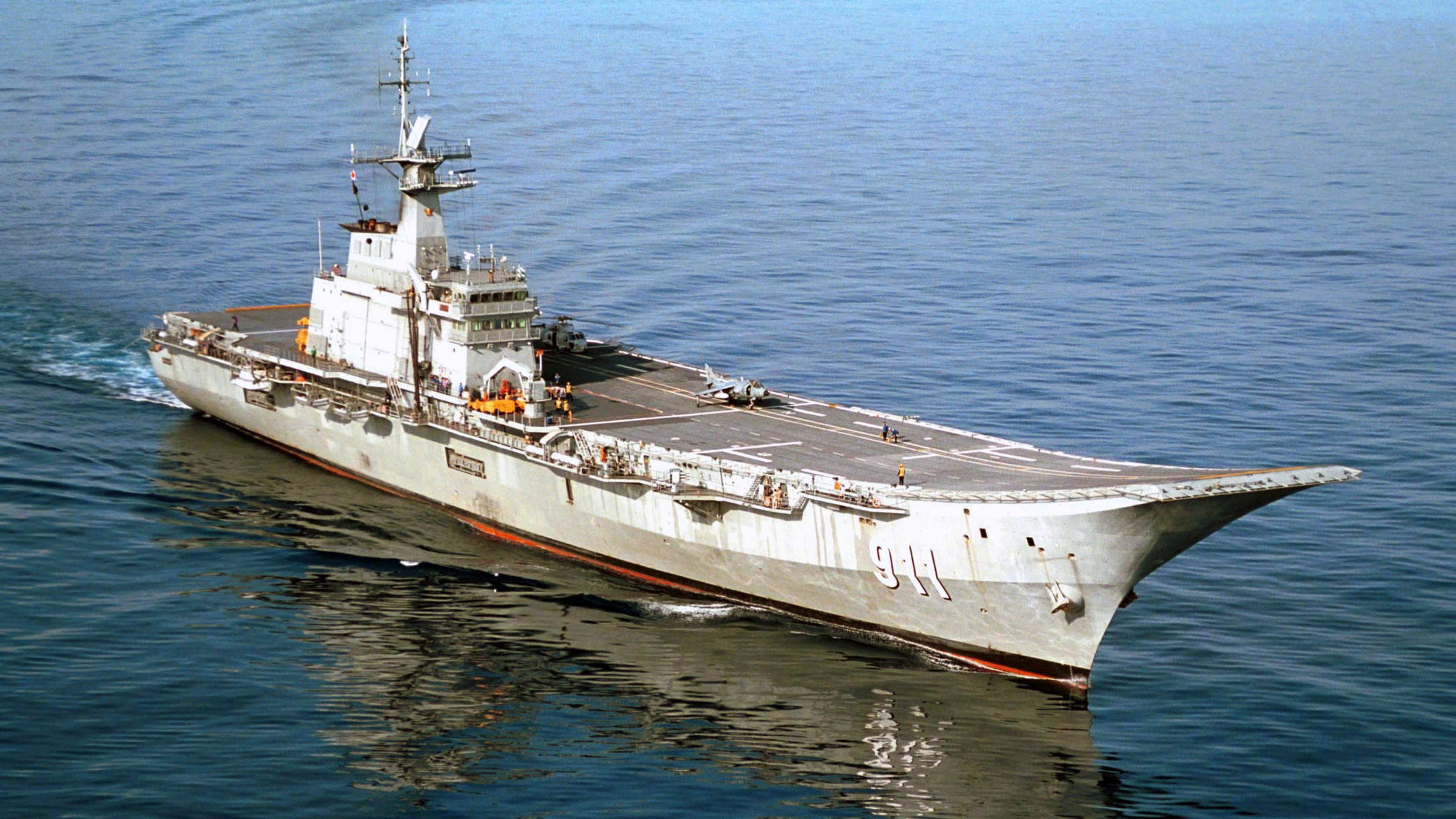For all its revolutionary technology and the unique operational advantages it can convey, the Harrier jump-jet has always remained a strictly niche combat aircraft. While advanced second-generation Harrier IIs today remain in service with the U.S. Marine Corps, Italy, and Spain, the first-generation, British-developed Harrier has long gone. Of the handful of operators of these earlier Harriers, Thailand stands out as the most surprising. And the story of the AV-8 Harrier and Thailand’s sole aircraft carrier is undoubtedly an unusual one.

In fact, while Thailand introducing an aircraft carrier capable of fixed-wing operations came somewhat out of the blue, the country has a long history of naval aviation. The Royal Thai Naval Air Division, or RTNAD, started life back in 1938 after the Siamese Revolution had ended the era of absolute monarchy and begun to introduce democracy. In the years up to World War II, the RTNAD flew a collection of seaplanes and floatplanes, most of them from Japanese or British production.
After World War II, during which Thailand entered a military alliance with Japan, the RTNAD was re-equipped with mainly American and British types, but a mutiny within the navy led to its assets begun transferred to the Royal Thai Air Force in 1951. It wasn’t until 1963 that the RTNAD resumed operations with its own equipment, including HU-16 Albatross amphibians.

Towards the end of the 20th century, the RTNAD was built up to become one of the more powerful naval air arms in the region, including long-range P-3 Orion maritime patrol aircraft and A-7 Corsair II attack jets flown from land bases. Modern helicopters, like the Sikorsky S-70 Seahawk and S-76 also arrived, to operate from Royal Thai Navy warships.
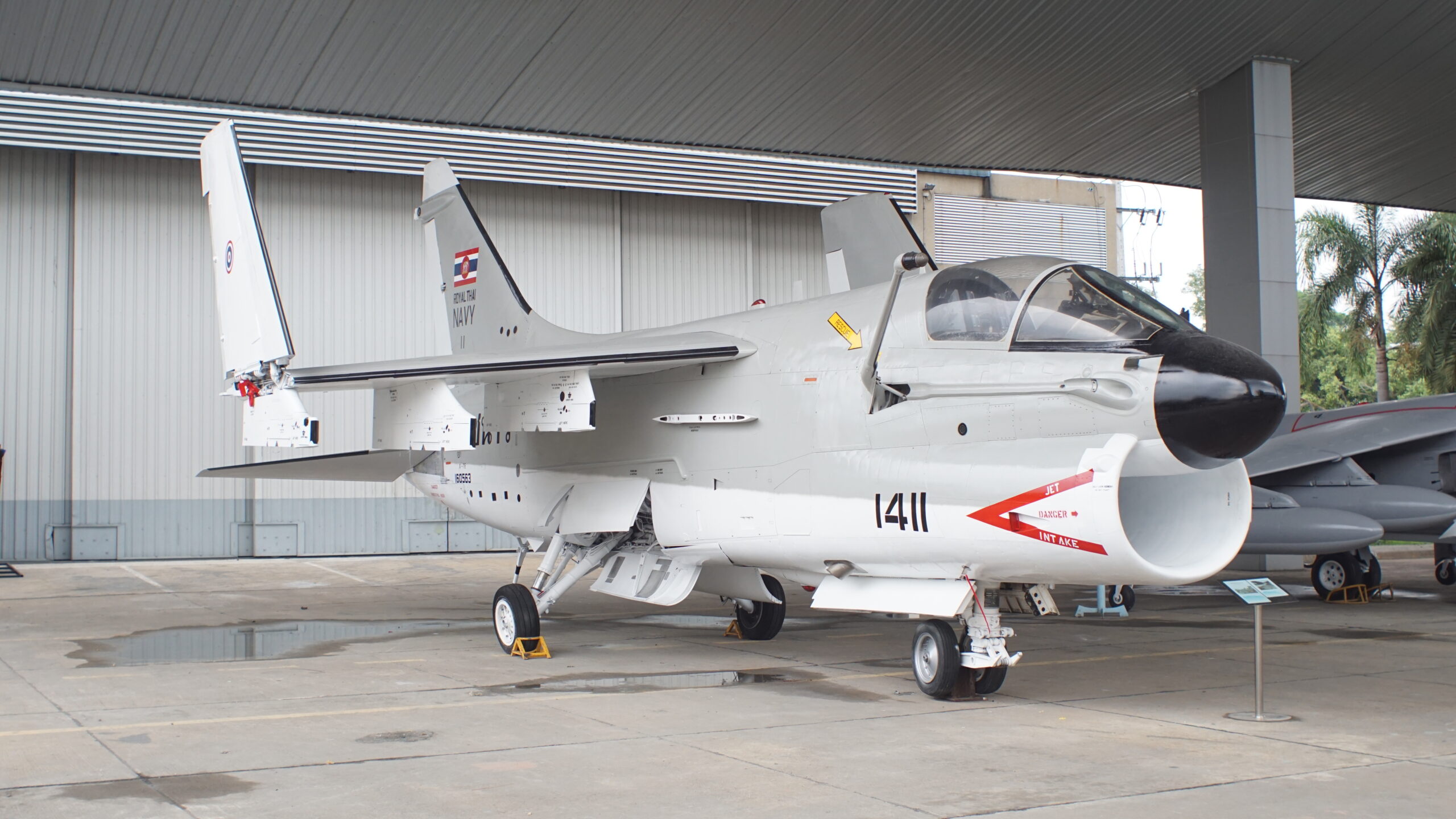
In the early 1990s, around the same time that Thailand was negotiating the purchase of two squadrons of ex-U.S. Navy A-7s, the country also began efforts to establish an aircraft carrier capability, together with an air wing of Harrier attack jets. At the time, no other country in Southeast Asia possessed an aircraft carrier capable of any kind of fixed-wing operations. The closest such capability, geographically speaking, was in India, where Sea Harriers flew from the veteran carrier Vikrant and the ski-jump-equipped Viraat.
Rather than acquiring a second-hand aircraft carrier, which had been the normal route for smaller naval powers, Thailand chose to buy a brand-new vessel. In 1991 an order was placed with the German shipyard Bremer Vulkan. This deal was canceled, reputedly due to German national law preventing the export of aircraft carriers for offensive purposes, and instead, the order went to the Bazán shipyard in Spain.
Major construction work on the carrier began when the hull was laid down in July 1994 and the hull was launched in January 1996. Sea trials then followed between November 1996 and January 1997.
The design of the carrier, officially named HTMS Chakri Naruebet, was strongly influenced by the Príncipe de Asturias built for the Spanish Navy, but the Thai vessel was around 44 feet shorter for a length of just under 600 feet. Fully loaded, the carrier displaced 11,485 tons. This made it the world’s smallest functional aircraft carrier at the time. For comparison, the U.S. Navy’s future Flight III Arleigh Burke class destroyers will be 509 and a half feet long and displace around 10,864 tons.

Taken into Royal Thai Navy service in August 1997, the same day it was named, the Chakri Naruebet made its home at Sattahip Naval Base in Chon Buri, close to U Tapao, the main base of the RTNAD fleet.
The RTNAD’s A-7s, capable of missions including maritime strike, reconnaissance, and even combat air patrols, were potent jets, there was never any question they would go aboard the new carrier, which was completed with no catapults or arrester gear and with a ski-jump ramp on the bow. This was tailored for operations by Harrier short takeoff and vertical landing (STOVL) jets.
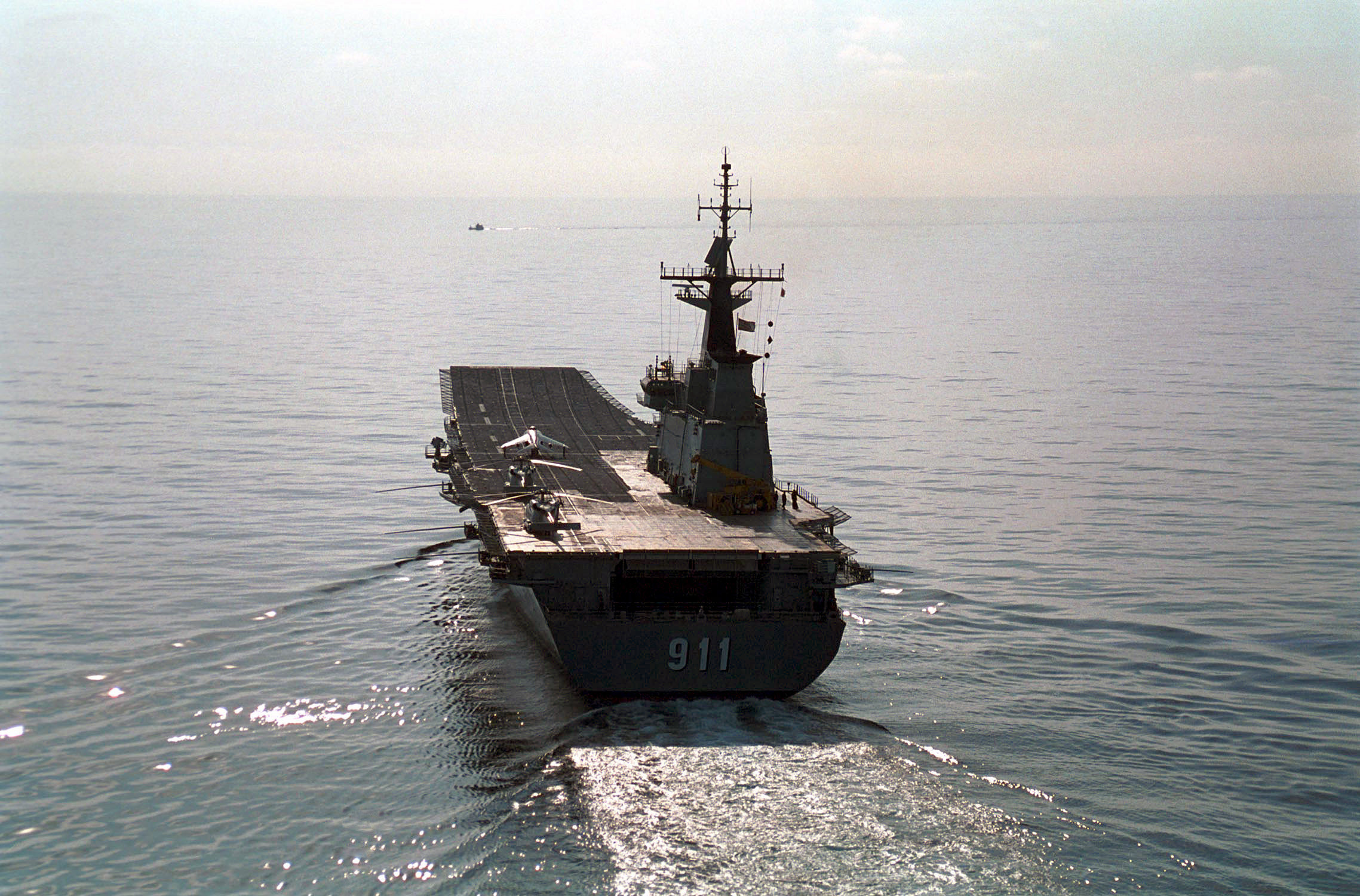
By now, the U.S. Marine Corps and the U.K. Royal Air Force were operating second-generation Harrier IIs, with night-attack capability and, in the case of the AV-8B Harrier II+, AN/APG-65 multi-mode radar, first flown on the jet in 1992. The APG-65 made the AV-8B compatible with AIM-120 AMRAAMs and AGM-84 Harpoon anti-ship missiles, although, in practice, only the AMRAAMs were introduced to service, some years later.
It’s unclear whether Thailand seriously considered buying Harrier IIs, but it seems that budgetary concerns led to a different choice — secondhand first-generation Harriers bought from the Spanish Navy.
These were AV-8S aircraft, known in Spain as Matadors, and with very basic avionics, making them capable of daytime ground attack with unguided bombs and rockets and limited air defense with AIM-9 Sidewinder missiles. A wet-film camera fitted in the nose could be used for reconnaissance.
The RTNAD received seven single-seat AV-8S and two twin-seat TAV-8S aircraft, negotiating their purchase from the U.S. government (as the original supplier) beginning in October 1993. Reportedly worth around $100 million including spares, support, and training, the jets were refurbished by the CASA company in Spain and were on board the Chakri Naruebet when it arrived in Thailand.
Meanwhile, training of RTNAD aircrew for the new jets was kicked off at Meridian and Kingsville in the United States, with conversion onto the Harrier at Rota in Spain, beginning in December 1995.
The addition of the jump jets to the RTNAD, within which they comprised 301 Squadron, was unquestionably a point of pride for Thailand although, in practice, they proved — unsurprisingly — hard to support. Thailand had been negotiating a number of extra airframes from the United States for use as a source of spares, but it seems that lack of funds meant this never happened.
As it was, reports indicated that, as of 1999, only two of the Thai Harriers were typically available at any given time, mainly due to engine issues. A donation of 20 spare engines from the United States was needed to keep the fleet going as the effects of the Asian financial crisis were felt hard.
While the Chakri Naruebet and its Harriers provided a unique capability in Southeast Asia, the fixed-wing aircraft were rarely embarked, the carrier normally supporting S-70B helicopters for anti-submarine warfare, transport, and liaison.
The carrier could also embark other helicopter types, including Royal Thai Army Chinooks, and RTNAD S-76s, with up to a dozen rotorcraft in total. The maximum mixed air wing comprised six helicopters and six Harriers.
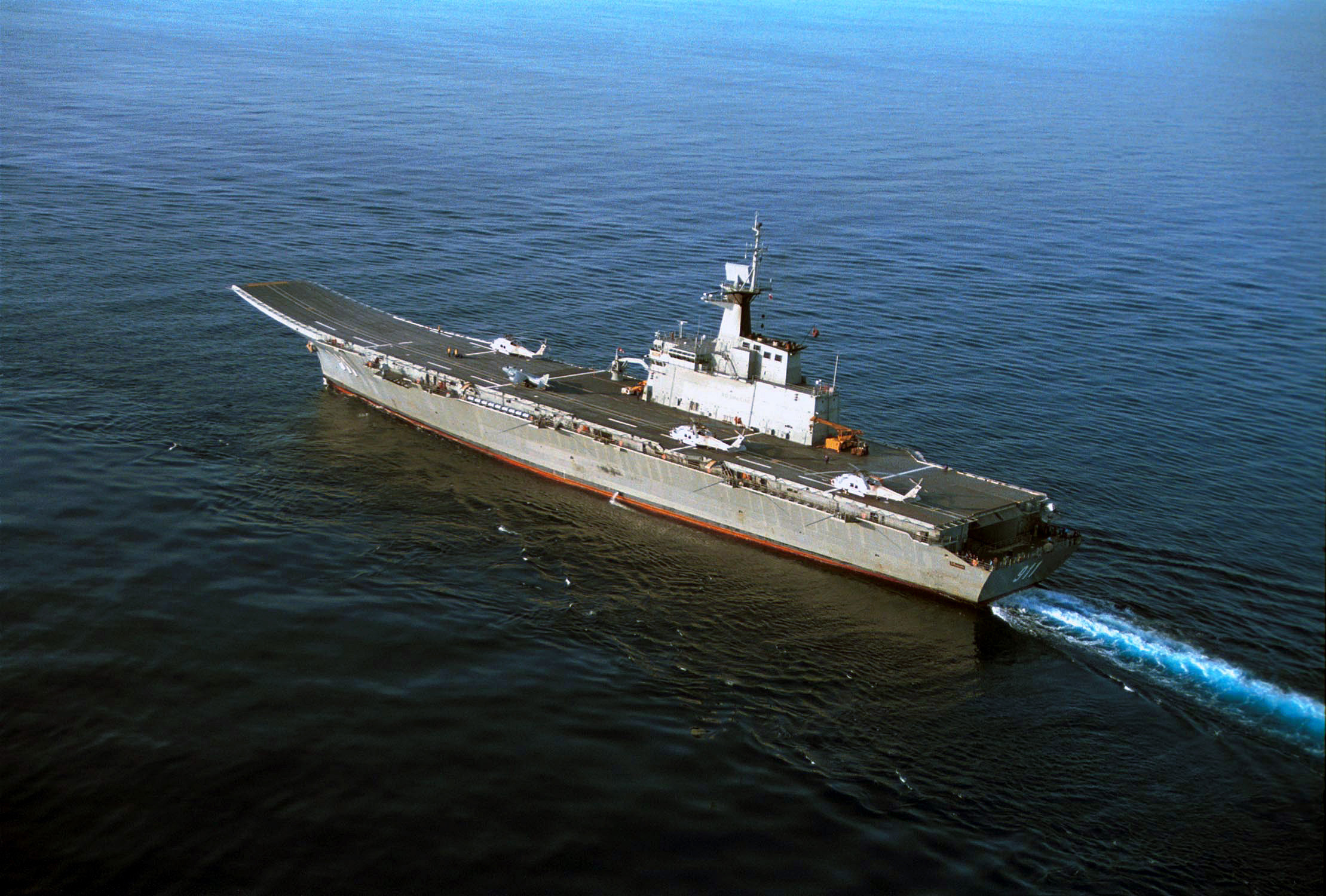
As planned, the carrier also had a fairly robust organic air defense capability, with Sea Sparrow and Mistral surface-to-air missiles and four Phalanx CIWS. However, the Sea Sparrow launchers don’t appear to have been fitted and the functionality of the overall air defense system has been questioned.
By the early 2000s, the Harriers were going to sea aboard the carrier rarely, if at all, and in 2006 it was reported that the jets had been retired from service. Undoubtedly impressive when working properly, the aircraft was, without doubt, a serious drain on resources and funds, and imposed huge training demands.
Reportedly, efforts were made in 2003 secure secondhand U.K. Royal Navy Sea Harrier FA2s, which would have been far more capable, especially in the air defense role. Regardless, no Sea Harrier deal was ever signed and the United Kingdom retired the Sea Harrier in 2006.
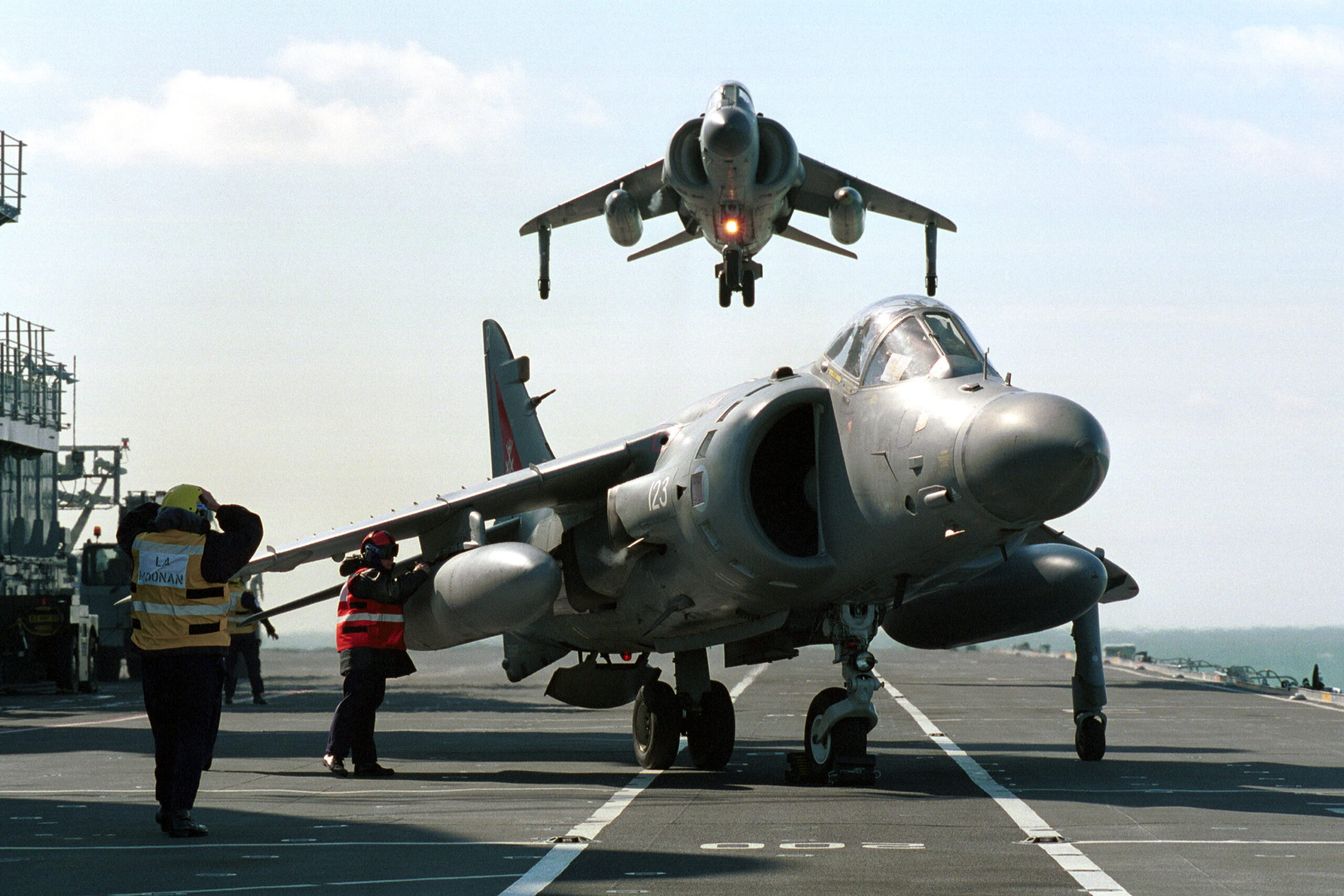
As for the Chakri Naruebet, the vessel remains the flagship of the Royal Thai Navy, although it is now referred to as an ‘offshore patrol helicopter carrier.’ The warship has been used for several notable disaster relief operations, including in response to the 2004 Indian Ocean tsunami and flooding incidents in Thailand. The carrier is well suited to disaster relief and humanitarian missions, with the ability to serve as a forward base for helicopters and small boats and to receive casualties while transporting food and supplies.
Other typical missions include regular crew training assignments and serving as a ‘royal yacht’ to transport members of the Thai Royal Family.
The carrier has also had a couple of media appearances, including standing in for the USS Ranger during the filming of the Vietnam War movie Rescue Dawn.

The warship, and some of its Harriers, also later turned up in a TV commercial for a British optical retailer.

Some efforts have been made to enhance the combat capabilities of the carrier, with Saab being contracted in 2012 to install a new command and control system and a Sea Giraffe Agile Multi-Beam radar. Improved datalinks were also fitted and these were put to the test in an exercise last year when the carrier operated in a networked fashion with Royal Thai Air Force Gripen fighter jets and Royal Thai Navy frigates.
In another sign of local modernization efforts, the Royal Thai Navy has recently tested the locally developed MARCUS-B, or Maritime Aerial Reconnaissance Craft Unmanned System-B, a roughly 90-pound vertical takeoff and landing drone, aboard the carrier. The payload of the MARCUS-B was not specified, it would clearly lend itself to different surveillance sensors, and potentially also light weapons. While the carrier could easily accommodate smaller VTOL drones like this, it could potentially also operate larger UAVs, an area of increasing interest for operators of flattop vessels.

This suggests that there are plans, at least, for the carrier to undertake more operational roles, such as amphibious warfare and regional force projection. While Thailand has sought a neutral role in the territorial disputes over the South China Sea, as well as conducting military maneuvers with China, the carrier could be a useful asset in future show-of-force or peacekeeping missions in the region. Last year, together with two escorts, Chakri Naruebet completed a rare appearance in the Singapore Strait. That could also signal an intention for the carrier to operate more widely in the region.

In the meantime, Chakri Naruebet is much more likely to be seen taking part in exercises as Thailand seeks to expand military relationships with other naval powers, or in its home port at Sattahip. Here, curious tourists have the rare opportunity to go aboard an operational carrier — although its days as a ‘Harrier carrier’ are fast becoming a distant memory.
Contact the author: thomas@thedrive.com
